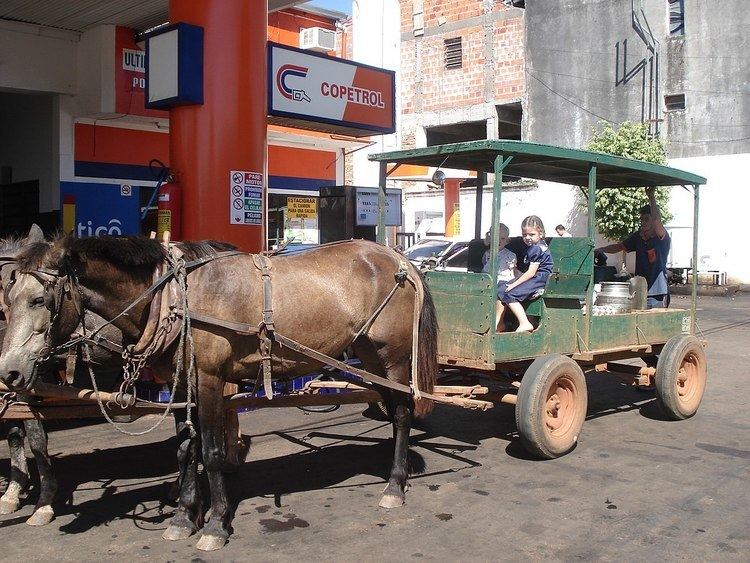 | ||
Mennonites in Paraguay are ethnic Mennonites with a central European ancestry or of mixed (southern European/Amerindian) or Amerindian ancestry as the vast majority of Paraguayans. Ethnic Mennonites contribute heavily to the agricultural and dairy output of Paraguay.
Contents
History
In the 1760s Catherine the Great of Russia invited Mennonites from Prussia to settle north of the Black Sea in exchange for religious freedom and exemption from military service, a precondition founded in their commitment to non-violence. After Russia introduced the general conscription in 1874, many Mennonites migrated to the US and Canada. The members of the Colonia Menno settled first in Canada until a universal, secular compulsory education was implemented in 1917 that required the use of the English language, which the more conservative Mennonites saw as a threat to the religious basis of their community. 1743 pioneers came from Canada to Paraguay in 1927 and turned the arid Chaco into fertile farmland over the years. It was the first Mennonite colony in the region.
At the beginning, the pioneers in the Chaco had to overcome many adversities. Many became sick due to the lack of medical care, whereof 121 died and some 60 families returned to Canada.
In 1930 more Mennonites immigrants arrived to the Chaco area from Russia mostly via Germany and founded the Fernheim colony, fleeing the persecution by the Communists and a bad economic situation that was caused by the collectivization in the Soviet Union and eventually lead to the Holodomor. More Russian Mennonites fled to the west with the receding German Army fearing persecution, Russian forced labor camps and deportation. Some 3,500 of these Mennonites arrived in Paraguay and founded Neuland and Volendam colonies in 1947.
Origin and languages
Ethnic Mennonites, that is Mennonites of German, Swiss German and Dutch descent in Paraguay are spread across 19 colonies and in the city of Asuncion. The vast majority of ethnic Mennonites in Paraguay can trace their origin to the Mennonite settlement in the Vistula Delta, from where they migrated to the Russian Empire. 25% of the Mennonites of Paraguay came directly from Russia, 51% from Russia via Canada, where they lived for several decades and a further 22% from Russia via Canada via Mexico (some from Mexico via Belize). Another 2% are descendants of Amish immigrants from the United States, who came originally from Switzerland and southern Germany. All Russian Mennonites share the same ancestry, language (Plautdietsch) and a lot of other traditions in contrast to the Amish-Mennonites, who speak or spoke Pennsylvania German along with English.
Demography
There were 22,710 ethnic Mennonites living in Paraguay in 1987 and 29,045 in 2000. Plautdietsch speakers were estimated 40,000 in 2007 according to Ethnologue.
Major colonies
There are two major Mennonite concentrations in Paraguay. The first one in the Gran Chaco region (West), and the second one in Eastern Paraguay.
In 2014 Menno Colony has about 10,000 inhabitants, Fernheim about 5,000 and Neuland about 3,500.
Mennonites of the Central Chaco
The Central Chaco region probably has the highest concentration of ethnic Mennonites anywhere in Latin America. Ethnic Germans (almost all of them Mennonites) formed 32% of the total population of the Central Chaco as of 2005. Only Paraguayan Indians (52%) were more numerous compared to them. Latin Paraguayans, the majority ethnic group in Paraguay, constituted just 11% and Braziguayans and Argentines another 5%.
Mennonites have received some criticism from human rights organizations for their relations with a number of indigenous tribes, including the Ayoreo people in Paraguay.
Conservative Mennonites
Colonies of Conservative Mennonites can be found in Asunción, Catupyry, Colony Florida, Canindeyú Department, Itapúa Department, and in Hohenau.
